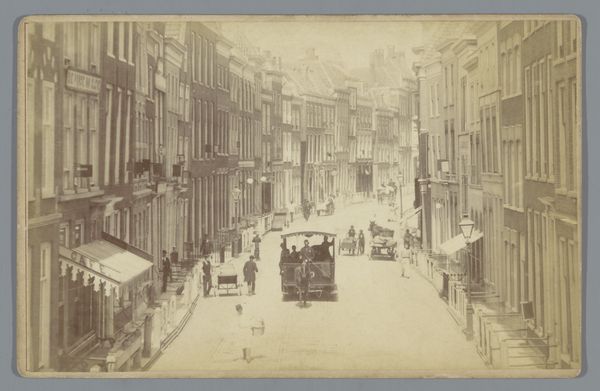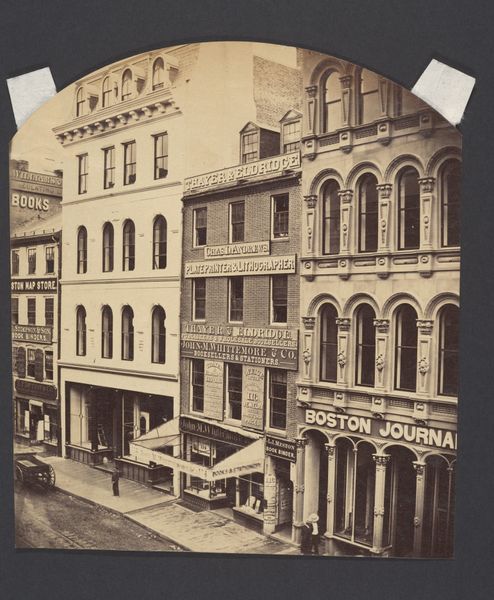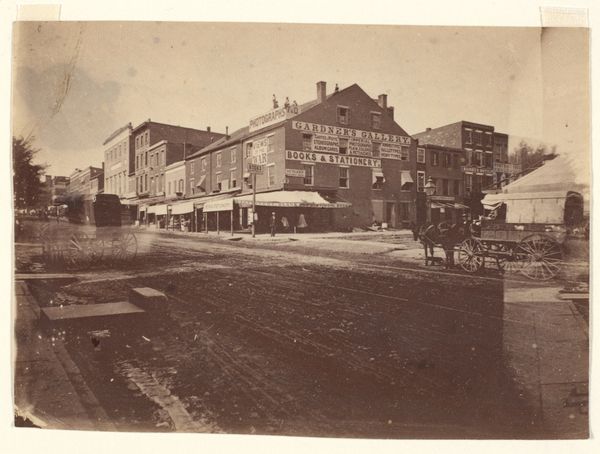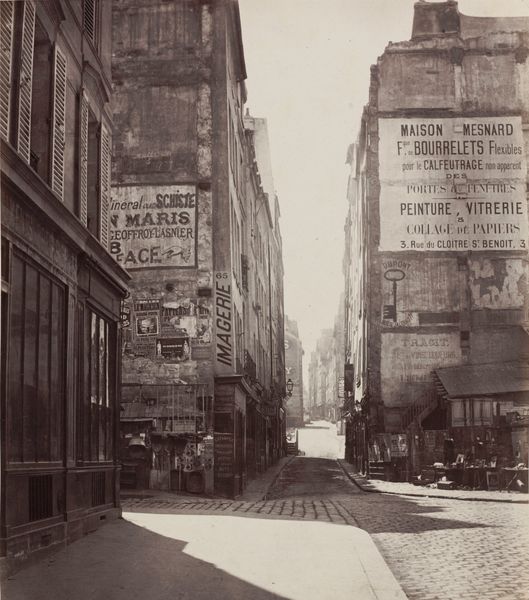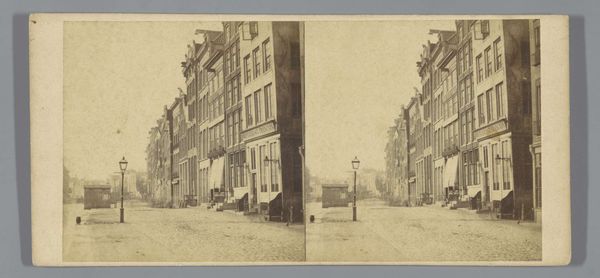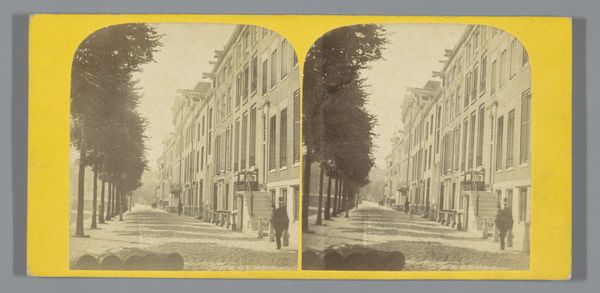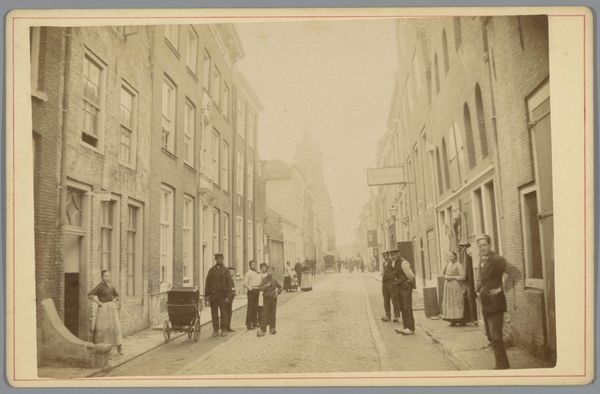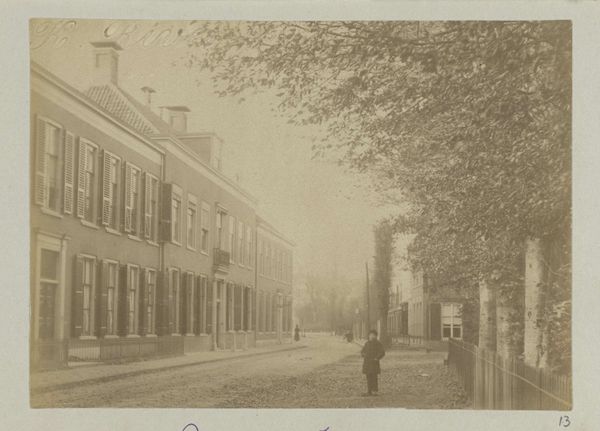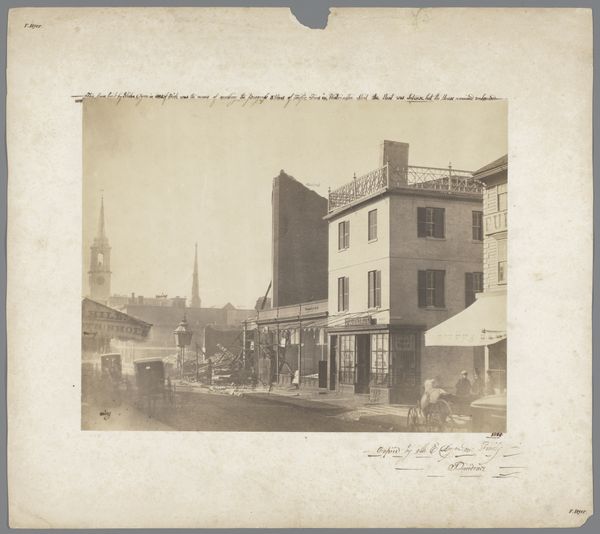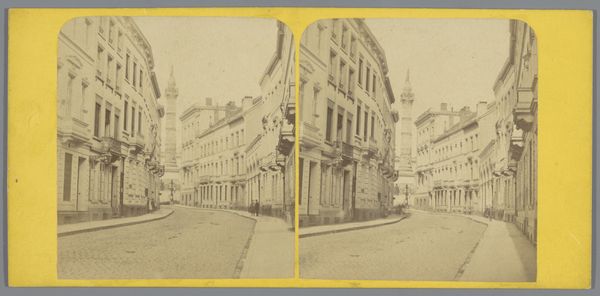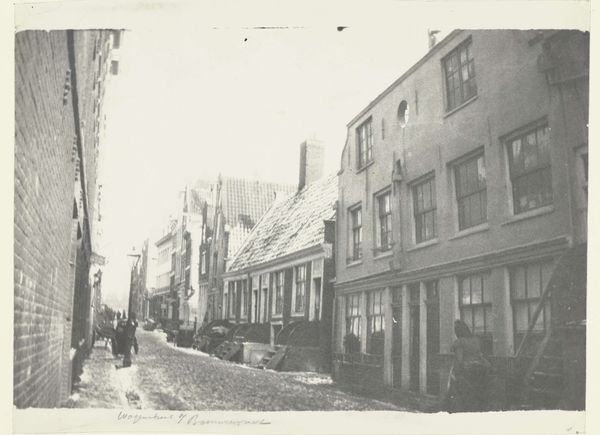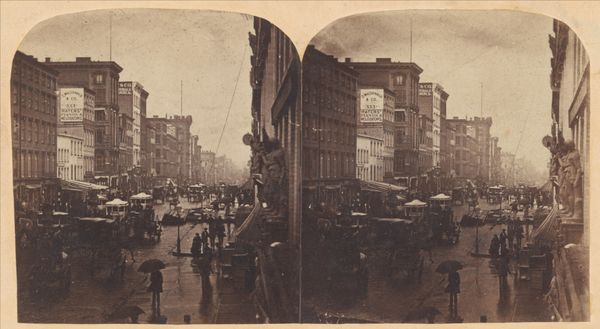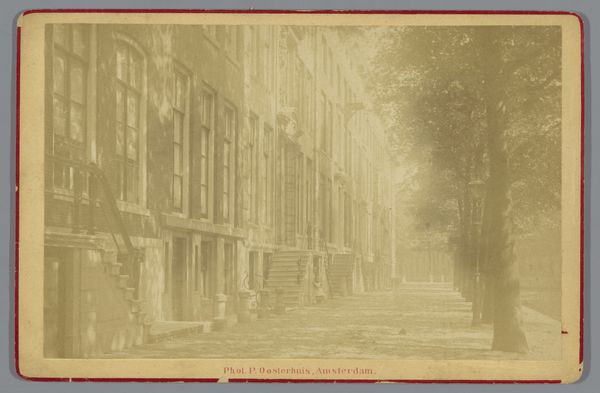
daguerreotype, photography, albumen-print, architecture
#
daguerreotype
#
historic architecture
#
street-photography
#
traditional architecture
#
photography
#
19th century
#
cityscape
#
skyscape
#
albumen-print
#
architecture
#
realism
#
historical building
Dimensions: image: 10 13/16 x 9 1/2 in. (27.5 x 24.1 cm) support: 39.1 x 32.4 cm (15 3/8 x 12 3/4 in.)
Copyright: National Gallery of Art: CC0 1.0
Curator: What a wonderfully evocative scene. This daguerreotype, entitled "School Street, Boston," believed to be from the 1850s, offers a fascinating glimpse into urban life during that period. It’s attributed to Josiah Johnson Hawes, a prominent Boston photographer. Editor: There’s almost an unsettling tranquility to it. The narrow street receding into a soft haze, lined with imposing buildings, makes me think of the intense inequalities in wealth and access that defined city life then. It’s beautiful, yes, but the silence screams. Curator: Indeed, the city as both a site of opportunity and of stark disparities. Looking at it, consider how burgeoning commerce reshaped public spaces. We must also note how the perspective invites reflection on ideas of progress and its costs. Editor: Absolutely. It strikes me how many of the shop signs seem tailored toward a specifically male clientele--tailors, purveyors of academic wares, no less--and I'm wondering what social dynamics are at play. Who gets to claim this space? Who benefits from the image-making? Where are the women in this image of bustling activity? Curator: An important intervention. This highlights a crucial tension in such representations. Who is present and who is noticeably absent in this constructed vision of Boston’s ‘progress?’ Further, who were Hawes’ clients? Editor: And beyond that, understanding how images of progress were instrumental in forming cultural narratives. How is the "School Street, Boston" implicated in shaping what progress was and what it would look like? Was Hawes a tool in visualizing such narratives? Curator: I appreciate how you bring forward questions regarding the very role that photography plays in this urban transformation, pointing to art's complex agency in that moment and even to this day. Editor: Likewise. Looking at this scene, one's own implication comes to the surface; photography both provides a precious connection and further mediated representation of the lived realities from which our understanding expands.
Comments
No comments
Be the first to comment and join the conversation on the ultimate creative platform.
